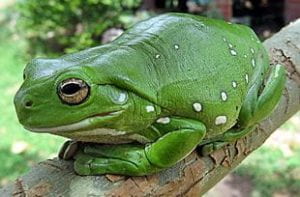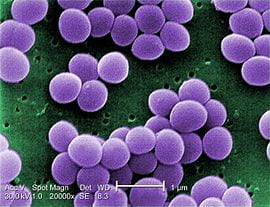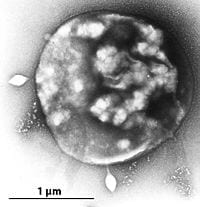Learning Objectives
- Give some examples of the variety of life on earth and explain how organisms are similar and how they differ (traits).
- Notice and explain the various ways that organisms live in the world and meet their requirements for shelter, food, and safety throughout their life cycles.
- Explain and apply how ecologists define biodiversity as species richness and evenness, label different higher levels of ecological biodiversity such as biomes, and provide reasons for the importance of maintaining biodiversity.
- Compare and contrast the defining characteristics of bacteria, archaea, and eukarya, the three domains of life.
- Explain the endosymbiotic theory of the origin of eukaryotes, and how endosymbiosis theory explains the unique characteristics of eukaryotes, relative to bacteria and archaea.
Biological Diversity Defined Ecologically
We’ve already mentioned that for every one human cell, you contain about 3 microbial cells, so how many species live inside of you? A normal microbiome contains around 1000 different species of bacteria, viruses, fungi, archaea, and single-celled eukaryotes (American Society for Microbiology, Human Microbiome FAQ). Humans can also play host to worms, fly larvae, and other macroscopic organisms. A human body provides resources, space, and safe harbor for the organisms that live inside it. Those organisms in turn can benefit, be neutral to, or detriment their human host. As a general rule of thumb, organisms that are more similar to each other tend to compete, affecting each other negatively, while very dissimilar organisms are more likely to be neutral or beneficial.
Let’s imagine a forest grassland that has tall and short trees as well as grasses. The soil has lots of bacteria and several species of fungi that interact with plant roots, giving off nitrogen in exchange for nutrients from the roots. The the tall trees compete with each other for light and space, the short trees compete with the tall trees for light and space, but the fungi and the trees benefit each other, even though they occupy the same space.
The following Crash Course video gives a quick overview of where organisms live, and why.
Temperature and moisture are the abiotic factors that dictate which species can survive and thrive in different areas, or biomes. Tropical regions maximize both of those abiotic factors, making the tropics potentially very diverse. For example, Gorongosa National Park in Mozambique contains two different biomes–savanna grasslands and tropical rain forest–and about 6 ecosystems, in its current state of restoration. The quality of these ecosystems is defined by their biodiversity, the variety of different species found interacting with each other and their environment within the ecosystem.
Why is biodiversity important?
For humans, biodiversity ensures a resource for new food crops and medicines. Plant life balances ecosystems, protects watersheds, mitigates erosion, moderates climate and provides shelter for many animal species. Biodiversity provides the oxygen we breathe. Natural plant pollination, crop pest control, and maintaining the genetic diversity of wild species related to domesticated species all ensure our continued food supply. Finally, ecosystem services range from nutrient cycles that include breaking down organic matter into nutrient compounds to rejuvenate the soil, to drinking water availability, to breathable air.
Three Domains of Biological Diversity
As Linnaeus did, we still classify organisms according to particular traits they have in common. At the domain level, we can consider representatives of each of the domains to help us define the characteristics of eukarya, archaea, and bacteria.



Figure: Eukarya (represented by the Australian green tree frog, left), Bacteria (represented by Staphylococcus aureus, middle) and Archaea (represented by Sulfolobus, right). [Photo credits: LiquidGhoul, Janice Haney Carr (CDC), Xiaoyu Xiang, in the Public Domain on Wikimedia Commons.]
Single-celled Bacteria and Archaea were the first inhabitants on Earth, appearing 3.5 to 3.8 billion years ago. Bacteria and Archaea are abundant and ubiquitous; that is, they are present everywhere. In addition to inhabiting moderate environments, they are found in extreme conditions: from boiling springs to permanently frozen environments in Antarctica; from salty environments like the Dead Sea to environments under tremendous pressure, such as the depths of the ocean; and from areas without oxygen, such as a waste management plant, to radioactively contaminated regions, such as Chernobyl. Prokaryotes reside in the human digestive system and on the skin, are responsible for certain illnesses, and serve an important role in the preparation of many foods. [Content adapted from OpenStax Biology]
Bacteria and Archaea [adapted from OpenStax Biology]
Bacteria and Archaea have plasma membranes, cytoplasm, ribosomes, and DNA that is not separated from the rest of the cell by a membrane. Most have peptidoglycan cell walls and many have polysaccharide capsules. Their cells range in diameter from 0.1 to 5.0 μm (micrometer, or 1/1,000,000th of a meter). As a cell increases in size, its surface area-to-volume ratio decreases. If the cell grows too large, the rate of diffusion of essential elements through the cell’s membrane will be too low to sustain the cell because the surface area is too low relative to the increased volume. So, single-celled organisms have a size limit that’s set by the diffusion rate across the cell’s membrane surface area.
There are three key differences between Bacteria and Archaea that you should know:
1) Archaea cell walls do not contain peptidoglycan, unlike bacteria. Also, their cell membranes have a different biochemical structure than either bacteria or eukarya.
2) Archaea have a complex RNA polymerase enzyme, similar to Eukarya. Bacteria have a simpler RNA polymerase.
3) When RNA is translated into proteins in archaea (and eukarya), the first amino acid is called methionine (Met), but bacteria use a slightly different amino acid, called formylmethionine (f-Met).
The following two videos explain in lecture format the characteristics that define bacteria and archaea:
Eukaryotes and Eukaryotic Origins [adapted from OpenStax Biology]
The earliest fossils found appear to be Bacteria, most likely cyanobacteria. They are about 3.5 billion years old and are recognizable because of their relatively complex structure and, for prokaryotes, relatively large cells. Most other prokaryotes have small cells, 1 or 2 µm in size, and would be difficult to pick out as fossils. Most living eukaryotes have cells measuring 10 µm or greater. Structures this size, which might be fossils, appear in the geological record about 2.1 billion years ago.
Characteristics of Eukaryotes
Data from these fossils have led comparative biologists to the conclusion that living eukaryotes are all descendants of a single common ancestor. Mapping the characteristics found in all major groups of eukaryotes reveals that the following characteristics must have been present in the most recent common ancestor of the eukaryotes, because these characteristics are present in at least some of the members of each major lineage.
1. Cells with nuclei surrounded by a nuclear envelope with nuclear pores. This is the single characteristic that is both necessary and sufficient to define an organism as a eukaryote. All extant eukaryotes have cells with nuclei.
2. Mitochondria. All eukaryotic lineages have mitochondria, though in a few species they are reduced to remnants of mitochondria.
3. A cytoskeleton. All extant eukaryotes have the cytoskeletal elements called actin microfilaments and microtubules.
4. Flagella and cilia, organelles associated with cell motility. Some extant eukaryotes lack flagella and/or cilia, but they are descended from ancestors that possessed them.
5. Chromosomes, each consisting of a linear DNA molecule coiled around basic (alkaline) proteins called histones. The few eukaryotes with chromosomes lacking histones clearly evolved from ancestors that had them.
6. Mitosis, a process of nuclear division wherein replicated chromosomes are divided and separated using elements of the cytoskeleton. Mitosis is universally present in eukaryotes.
7. Sex, a process of genetic recombination unique to eukaryotes in which diploid cells undergo meiosis to yield haploid cells called gametes. Gametes fuse together to create a diploid zygote nucleus.
Endosymbiosis and the Evolution of Eukaryotes [Adopted from Openstax Biology]
All living eukaryotes now are descendants of an chimeric organism that was a composite of a host cell and an oxygen-using bacterial cell, from the group alpha-proteobacterium, that “took up residence” inside the host cell. This process of one cell engulfing another, where the engulfed cell survives and both cells benefit is called endosymbiosis. Endosymbiosis explains the fundamental characteristics of eukaryotes. Evidence for this includes cell membrane structure similar to bacteria and separate genomes inside mitochondria and chloroplasts that show closer relatedness to bacteria than archaea or eukarya. Endosymbiotic events likely contributed to the origin of the most recent common ancestor of today’s eukaryotes and to later diversification in certain lineages of eukaryotes.
The diagram below explains, in three steps, the theory of how eukaryotes evolved. First, the ancestral eukaryote evolved some internal organization in the form of organelles, including a nucleus to sequester the DNA. Second, this ancestral eukaryote engulfed an energy-producing bacterium that evolved into the modern mitochondria that all eukaryotes possess. Third, one lineage of eukaryotes acquired a second endosymbiont that evolved into the chloroplasts of modern photosynthesizers like plants and green algae. The chloroplast is the organelle that allows plants and others to harvest their energy from sunlight.

Image Credit: Open Stax Biology, modified by Chrissy Spencer.
Wrap-up
Review these ideas by adding your own characteristics to the table below to summarize the similarities and differences in bacteria, archaea, and eukarya:
| Characteristic | Bacteria | Archaea | Eukarya |
| Cell number | Single-celled, mostly | Single-celled | Multicellular, mostly |
| Cell walls contain peptidoglycan | Yes | No, contain chitin | No, contents vary |
| Flagella | Spin | Spin | Undulate |
| RNA polymerase | Simple | Complex | Complex |
| DNA enclosed by a membrane | No | No | Yes |
| Chromosome | Circular (usually) | Circular | Linear |
| Protein translation initiated with amino acid | f-Met | Met | Met |
| Membrane-enclosed organelles | No | No | Yes |
